Highlights From the 2023 Organic Commodities Field Day
go.ncsu.edu/readext?946915
en Español / em Português
El inglés es el idioma de control de esta página. En la medida en que haya algún conflicto entre la traducción al inglés y la traducción, el inglés prevalece.
Al hacer clic en el enlace de traducción se activa un servicio de traducción gratuito para convertir la página al español. Al igual que con cualquier traducción por Internet, la conversión no es sensible al contexto y puede que no traduzca el texto en su significado original. NC State Extension no garantiza la exactitud del texto traducido. Por favor, tenga en cuenta que algunas aplicaciones y/o servicios pueden no funcionar como se espera cuando se traducen.
Português
Inglês é o idioma de controle desta página. Na medida que haja algum conflito entre o texto original em Inglês e a tradução, o Inglês prevalece.
Ao clicar no link de tradução, um serviço gratuito de tradução será ativado para converter a página para o Português. Como em qualquer tradução pela internet, a conversão não é sensivel ao contexto e pode não ocorrer a tradução para o significado orginal. O serviço de Extensão da Carolina do Norte (NC State Extension) não garante a exatidão do texto traduzido. Por favor, observe que algumas funções ou serviços podem não funcionar como esperado após a tradução.
English
English is the controlling language of this page. To the extent there is any conflict between the English text and the translation, English controls.
Clicking on the translation link activates a free translation service to convert the page to Spanish. As with any Internet translation, the conversion is not context-sensitive and may not translate the text to its original meaning. NC State Extension does not guarantee the accuracy of the translated text. Please note that some applications and/or services may not function as expected when translated.
Collapse ▲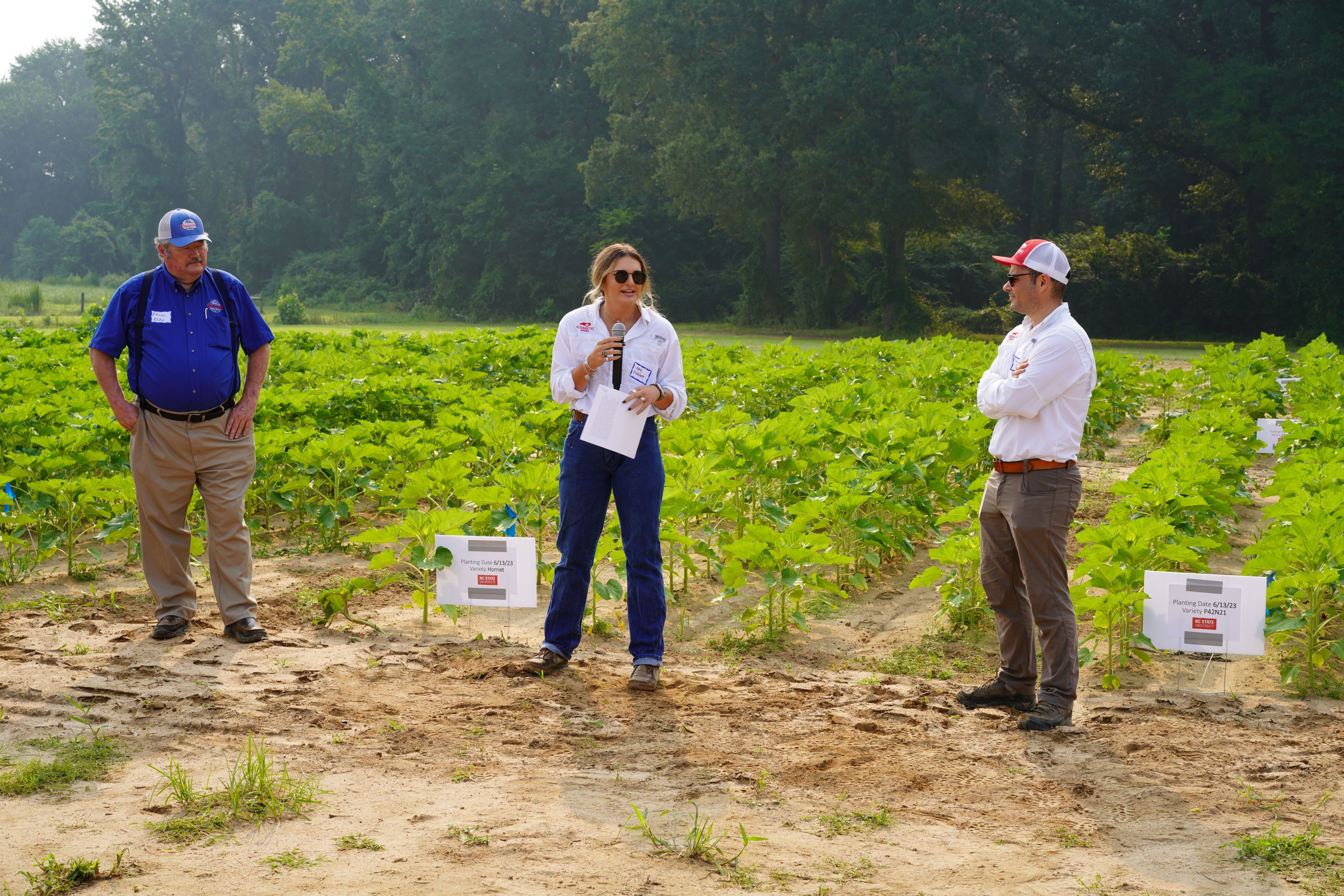 Abby Pleasant presenting on her research on organic high-oleic sunflower. Photo Credit: Esleyther Henriquez Inoa
Abby Pleasant presenting on her research on organic high-oleic sunflower. Photo Credit: Esleyther Henriquez Inoa
On July 18th, we hosted the 2023 Organic Commodities Field Day at Cherry Research Farm in Goldsboro, NC. We started the day by hearing about NC State’s recent research on organic high-oleic sunflower. First year master’s student Abby Pleasant is working to develop recommendations for North Carolina growers looking to add sunflower to their organic rotations.
Most sunflower in the U.S. is grown in North Dakota and South Dakota; but the crop has potential in North Carolina. Abby’s research is investigating optimal nitrogen rates and planting densities for high-oleic sunflower; as well as comparing different high-oleic varieties. Her variety trial is evaluating six high-oleic varieties’ yield performance and resistance to sunflower moths at two planting dates and two locations.
Organic Sunflower and Pest Management
Sunflower is a low-input crop that closes canopy quickly, making it ideal for organic production. One of the most significant challenges for organic sunflower production is pest management. Abby shared that we have had pest pressure from both sunflower moth and brown stink bugs in this year’s sunflower research plots in Goldsboro. Stink bugs are a challenging pest group which damage a variety of crops in North Carolina by feeding with piercing mouthparts, causing injury to the crop and creating opportunities for secondary infections.
Abby explained that in sunflowers, early-season stink bug damage impacted developing flower heads, causing deformities and ultimately reducing yield. In our research plots, scouting early in the season for stink bug presence and spraying organic approved pyrethrin based pesticide Pyganic helped limit stinkbug pressure. However, even with early season spraying, damage still has been observed in the sunflower heads.
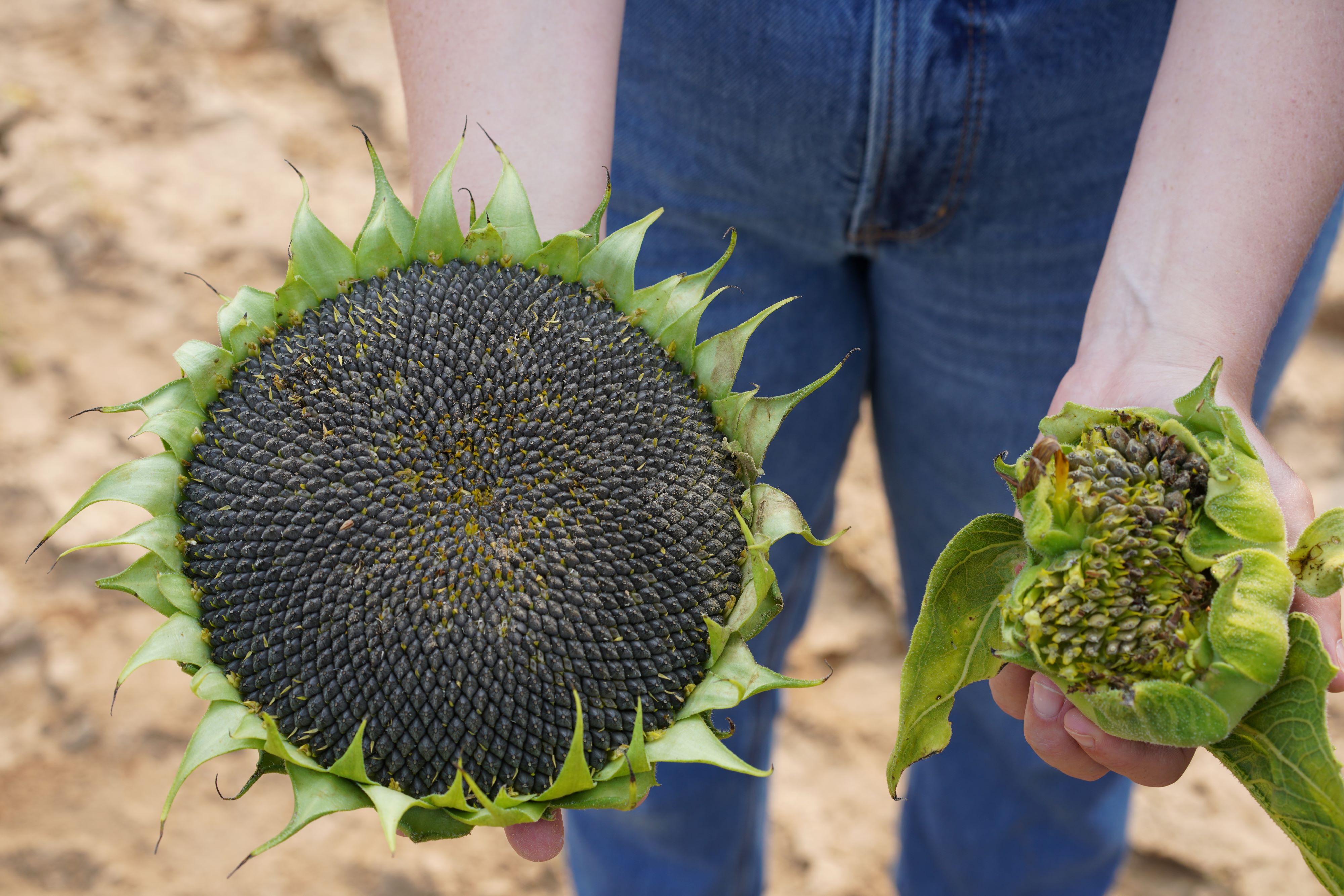 Healthy sunflower head (left) compared to a malformed head (right) due to early season stinkbug feeding. Photo Credit: Esleyther Henriquez Inoa
Healthy sunflower head (left) compared to a malformed head (right) due to early season stinkbug feeding. Photo Credit: Esleyther Henriquez Inoa
Another challenging pest that we observed in our plots, which are part of Abby’s research, are sunflower moths. Sunflower moths are a native migratory pest that cause significant economic losses in sunflower production each year. Sunflower moths lay eggs in developing sunflower florets. As sunflower moth caterpillars emerge they first feed on pollen and florets, and later feed on seeds causing yield loss. In addition to direct damage from seed feeding, sunflower moths create wounds in the sunflower which can lead to secondary infections such as Rhizopus.
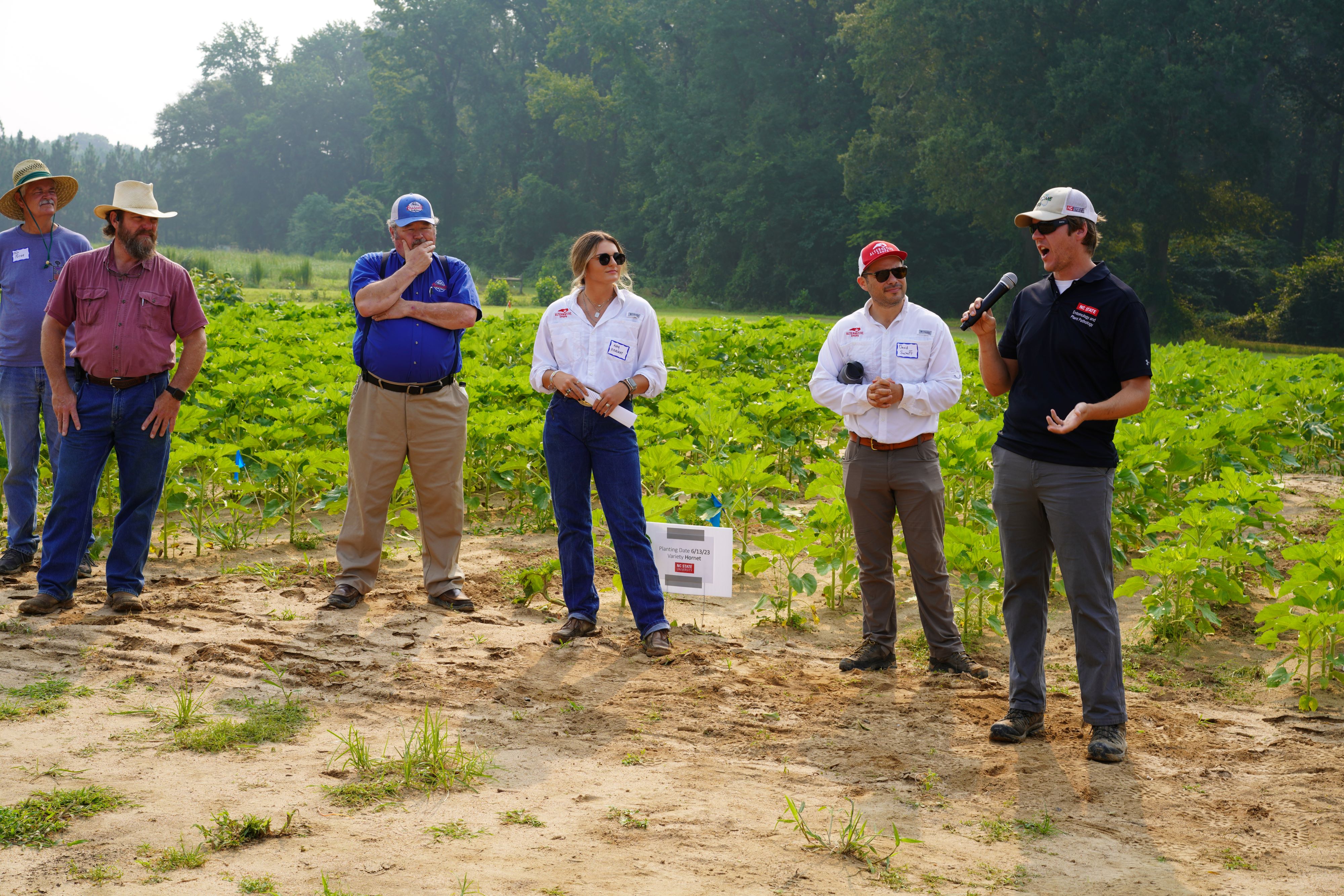 Dr. Anders Huseth speaking on pest management strategies for organic sunflower. Photo Credit: Esleyther Henriquez Inoa
Dr. Anders Huseth speaking on pest management strategies for organic sunflower. Photo Credit: Esleyther Henriquez Inoa
Dr. Anders Huseth, Associate Professor and Extension Specialist, spoke about strategies for scouting for sunflower moths as well as optimal times and strategies for spraying based on sunflower moths’ behavior. Sunflower moths are nocturnal, during the day they tend to hide under leaves which may make them difficult to spot. At night they make their way to the flower head so scouting with a flashlight an hour after sunset may make them easier to spot. While sunflower moths typically arrive in North Carolina in June and July, migration is spotty and unpredictable so frequent scouting during the season is recommended.
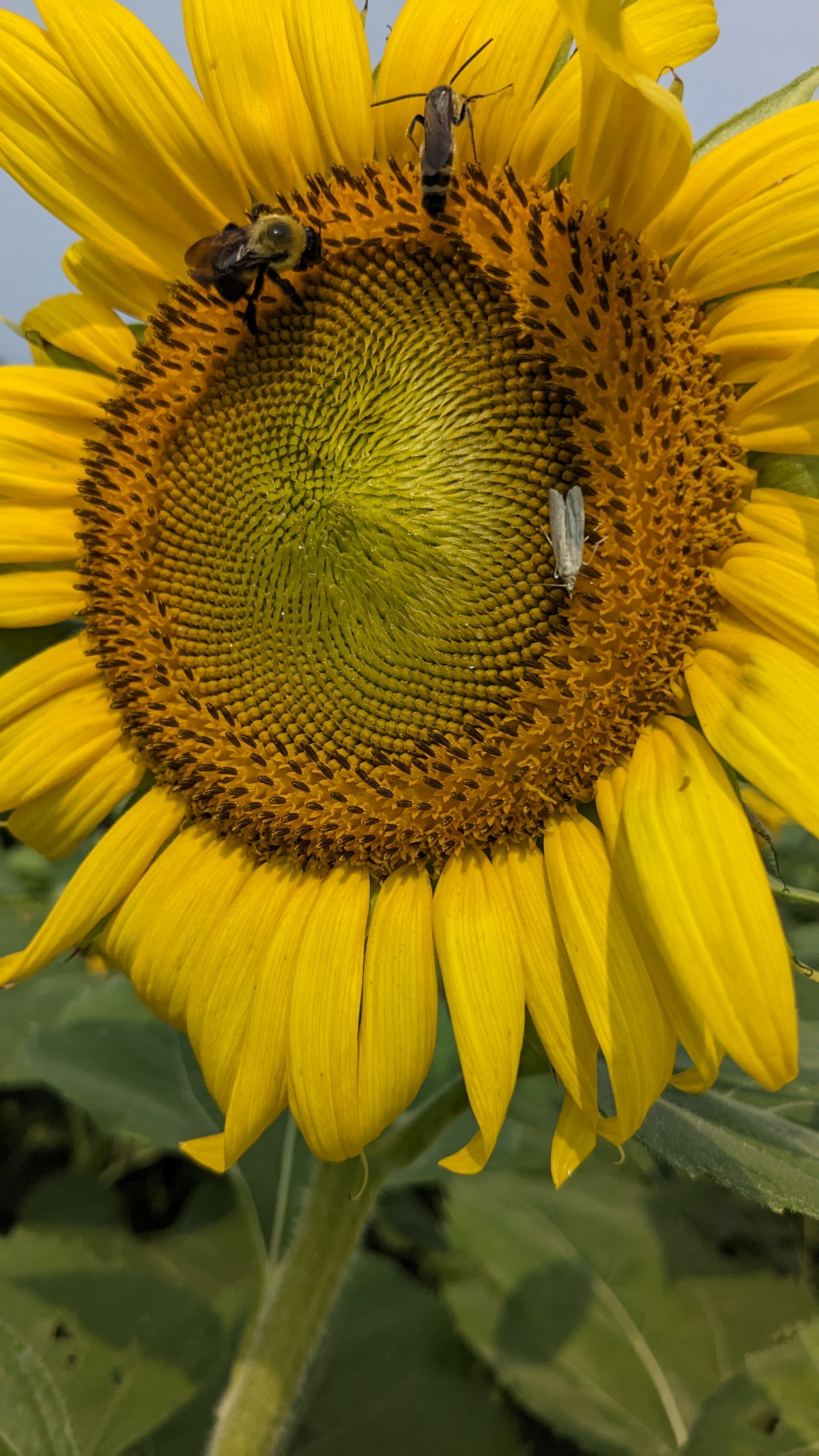 Sunflower moth pictured on head, generally described as a white or tan ‘cigar’ shaped moth
Sunflower moth pictured on head, generally described as a white or tan ‘cigar’ shaped moth
We look forward to sharing more updates on the results of Abby Pleasant’s work and sharing more resources on successful management of organic high-oleic sunflowers.
Strategies for High-Yielding Soybeans Applied to Organic Systems
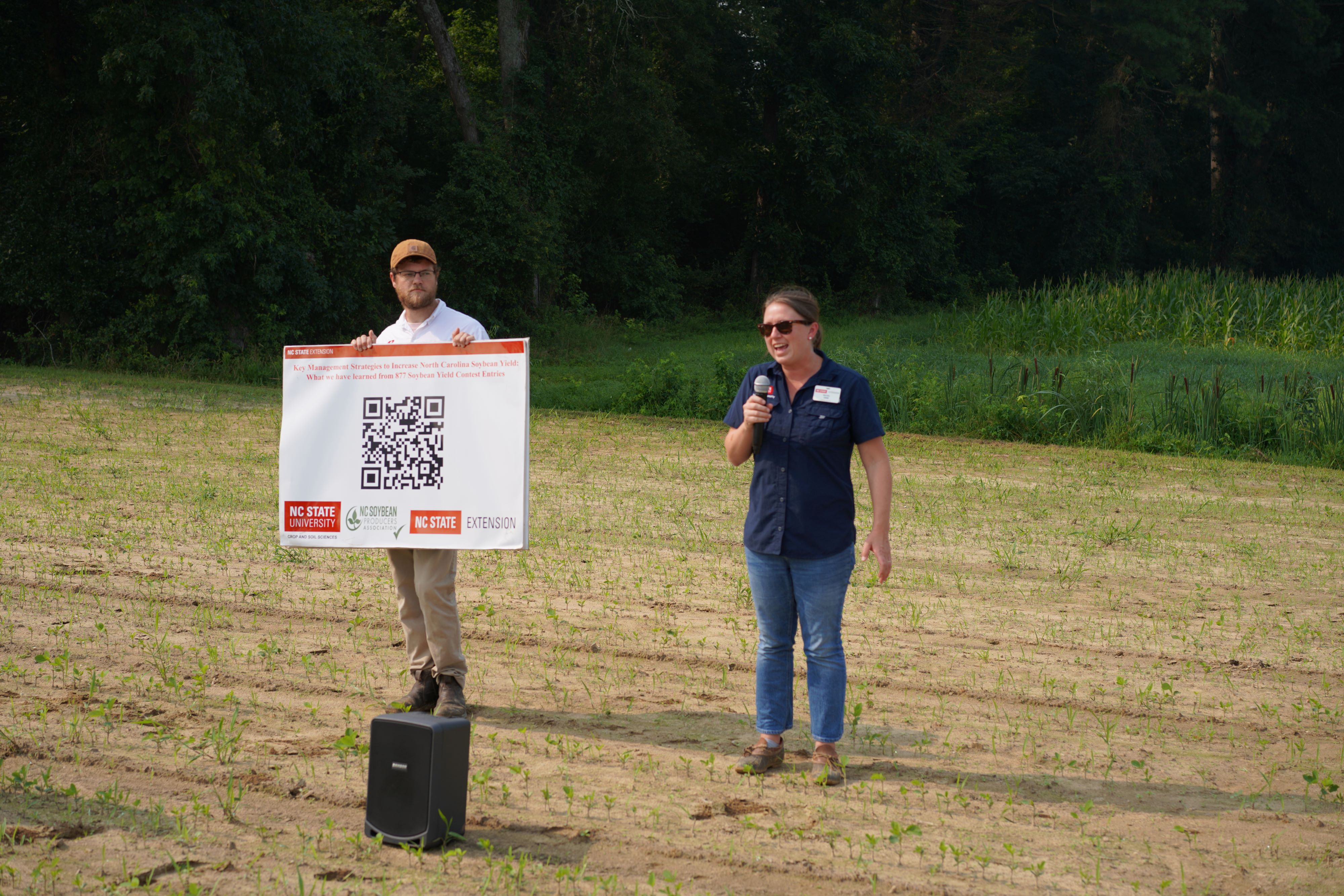 Dr. Rachel Vann presenting on strategies for high-yielding soybean. Photo Credit: Esleyther Henriquez Inoa
Dr. Rachel Vann presenting on strategies for high-yielding soybean. Photo Credit: Esleyther Henriquez Inoa
Dr. Rachel Vann, Assistant Professor, Extension Specialist, and Extension Platform Director of the NC Plant Sciences Initiative, shared with us key management factors organic producers should consider for high yielding soybeans. Dr. Vann highlighted results of a long-term analysis of the North Carolina Soybean Yield Contest. 877 entries across the state from 2002-2019 were analyzed to determine the most significant factors impacting soybean yield in North Carolina. The top factors impacting yield were maturity group selection, application of foliar-fungicide, and planting date.
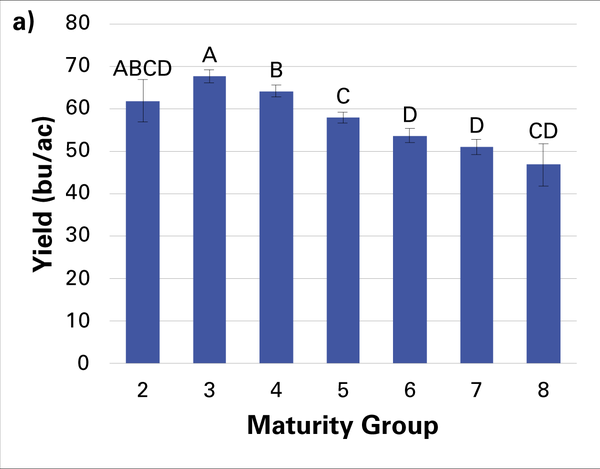
Impact of soybean maturity group on soybean yield in the North Carolina Soybean Yield Contest results from 2002-2019. Image Source: Key Management Strategies to Increase North Carolina Soybean Yield, North Carolina Soybean Production Guide
Maturity group selection was the most significant predictor of yield in the analysis of nearly 20 years of the North Carolina Soybean Yield Contest. Traditionally it has been recommended that North Carolina growers use Maturity Group 6 soybean varieties; however, growers have in recent years been adopting earlier maturing varieties and have seen higher yield returns. In the North Carolina Soybean Yield Contest, Maturity Group 3 varieties had the highest yield results across years followed by Maturity Group 4. Yields declined as Maturity Group increased, with Maturity Group 8 varieties having the lowest yields. Dr. Vann shared that while there are risks associated with earlier maturity groups, developments in genetics have favored earlier maturing varieties in high yielding environments.
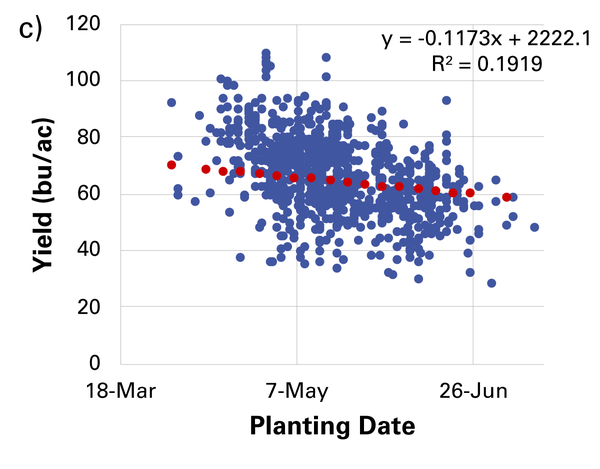
Impact of soybean planting date on yield in the North Carolina Soybean Yield Contest results from 2002-2019. Image Source: Key Management Strategies to Increase North Carolina Soybean Yield, North Carolina Soybean Production Guide.
Submissions to the North Carolina Soybean Yield Contest showed a trend of contestants growing earlier maturing varieties over time. With a trend towards earlier varieties, submissions with earlier planting dates were observed as well. Previous work recommended that soybeans in North Carolina be planted by June or later; however, with the introduction of new genetic developments in early maturity groups, this window of ideal planting has shifted earlier. In the North Carolina Soybean Yield Contest, producers who planted before Mid-May, with an earlier maturing variety (MG 3-4) saw higher yields. Organic producers may consider earlier maturity group selection and planting date as an avenue to increase yield in soybean.
 Example of mature frogeye leaf spot lesions on soybean. Image Source: Frogeye Leaf Spot of Soybean, Soybean Disease Information
Example of mature frogeye leaf spot lesions on soybean. Image Source: Frogeye Leaf Spot of Soybean, Soybean Disease Information
The second most significant factor impacting soybean yields was the application of foliar fungicide. While disease pressure is variable year to year, the application of foliar fungicides consistently resulted in higher yields in submissions to the NC Soybean Yield Contest regardless of planting date or maturity group. One of the most common foliar diseases in soybean in North Carolina is Frogeye Leaf Spot.
Dr. Vann drove home a key take home message for organic producers which was varietal selection. Extensive work has been undertaken in selecting for resistance to frogeye leaf spot in soybean, including conventionally bred, non-GMO soybeans which are available to organic growers. Preventative spraying is not an option for organic growers and organic fungicides are limited and expensive so selecting varieties which have resistance could be key to protecting yields down the line.
Dr. Vann closed by speaking about a new Extension tool available to soybean producers and extension agents: Beans Gone Wild! This online platform allows users to track issues happening across the state in soybean with reference pictures, in-depth descriptions of the problem, and recommendations.
Matching Tillage Tools to Your Operation
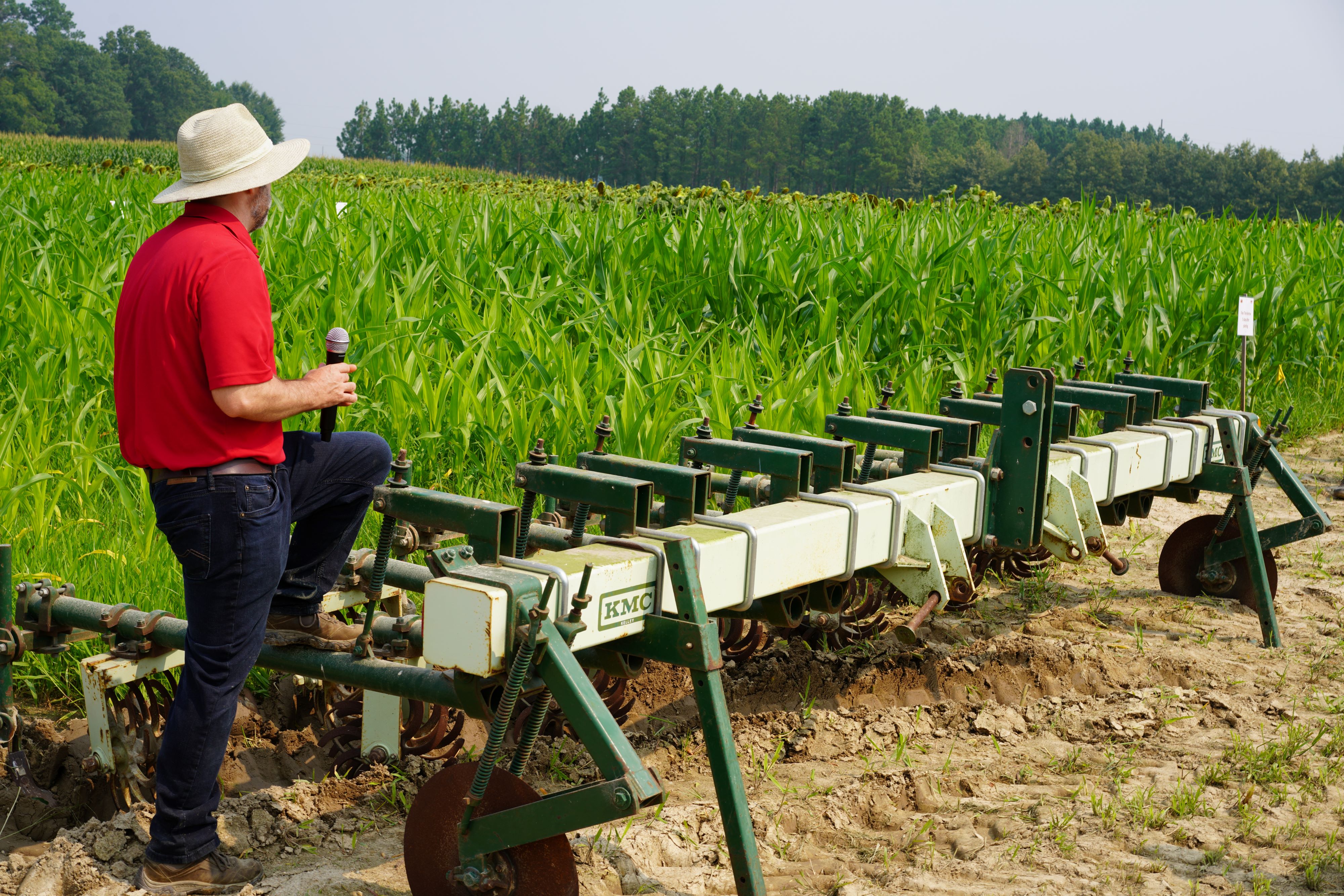 Dr. Chris Reberg-Horton presenting on cultivation options in front of a rolling cultivator. Photo Credit: Esleyther Henriquez Inoa
Dr. Chris Reberg-Horton presenting on cultivation options in front of a rolling cultivator. Photo Credit: Esleyther Henriquez Inoa
A major challenge for organic growers is weed management. With a variety of tillage implements available, knowing when to use certain tillage equipment can be challenging. Dr. Chris Reberg-Horton, Professor at NC State, walked us through different options organic growers have for cultivation throughout the season. Dr. Reberg-Horton began with covering the difference between blind cultivation and between-row cultivation.
Blind cultivation should happen early in the season within the first three weeks after planting. In blind cultivation soil very close to the crop is disturbed and weeds within inches of the emerging crop are damaged. Dr. Reberg-Horton shared that most weed seeds are in the top quarter inch of soil. The reason why crops themselves are not damaged during blind cultivation is the depth at which the crop is planted. Big seeded row crops are able to be planted deep and have more advanced root development than most early season weeds and are not disturbed during blind cultivation passes.
Producers may miss opportunities to cultivate later in the season due to field conditions being too wet and unpredictable weather. An interesting phenomenon Dr. Reberg-Horton highlighted is that weather forecasts tend to be more reliable earlier in the summer. In May big storm systems which have clear patterns move through large areas, but in June and July patches of summer thunderstorms with large amounts of precipitation can be variable and impact small pockets very quickly making cultivation planning more challenging.
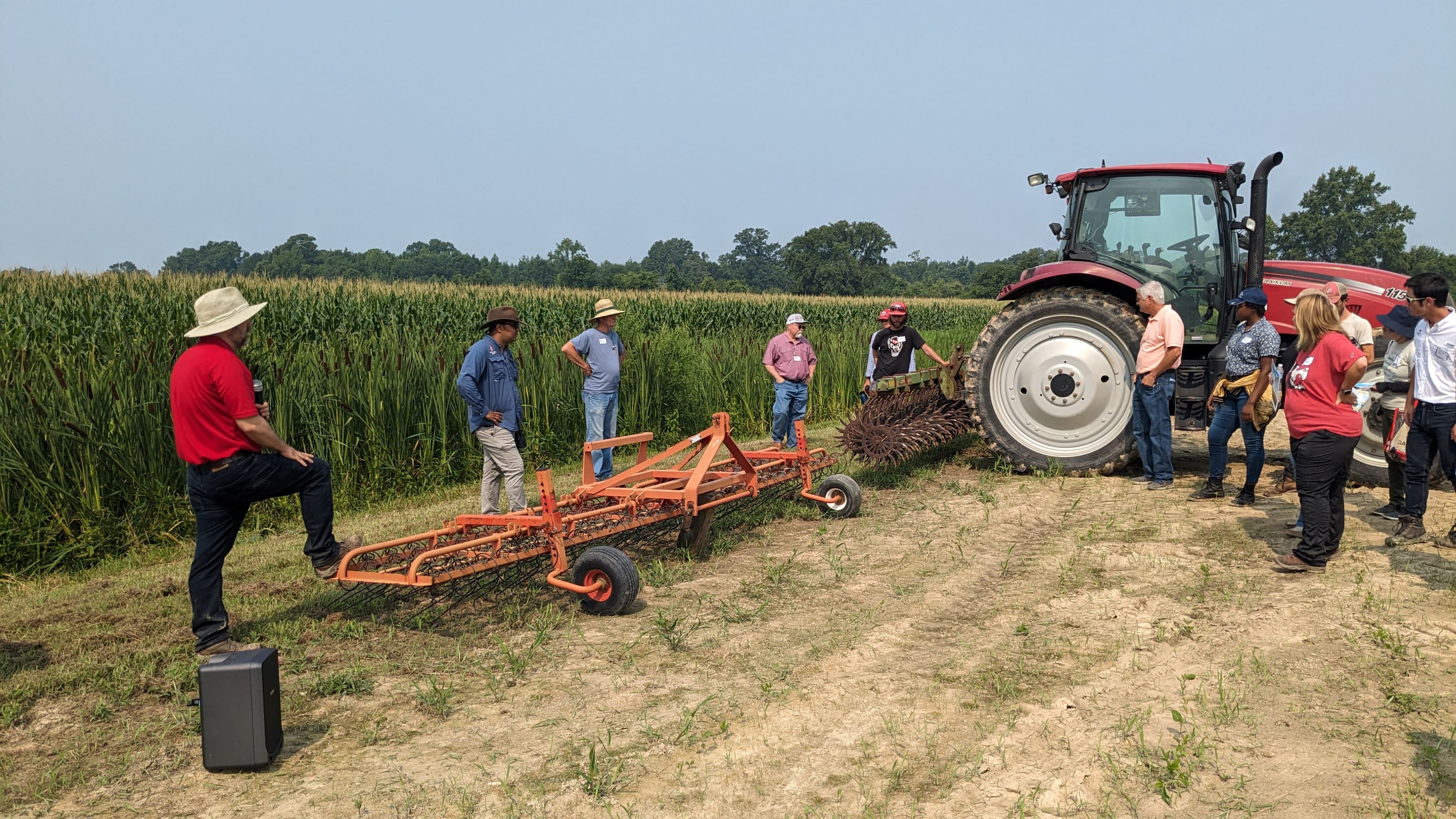 Dr. Chris Reberg-Horton (far left) speaking on blind cultivation by a flex tine harrow (left side implement) and rotary hoe (right side implement)
Dr. Chris Reberg-Horton (far left) speaking on blind cultivation by a flex tine harrow (left side implement) and rotary hoe (right side implement)
Different blind cultivation tools were discussed, including the rotary hoe and flex tine harrow. The flex tine harrow disturbs the soil surface by running tines through the soil which vibrate and break up soil and expose weeds which are in the white hair stage. With the flex tine harrow, the user can manually adjust the tension of the tines which impacts the level of disturbance. Tine harrows provide effective blind cultivation early in the season but if soil has a crust the tines may drag and be damaged. Another option for blind cultivation which can cut through soil crusts is the rotary hoe. A rotary hoe has a series of wheels with spikes that drag into the soil and spin as the tractor moves forward dragging the implement. The rotary hoe cuts into soil as the wheels move through the upper soil surface; uprooting developing weeds and breaking up soil.
Early season cultivation is a great option for producers but it is often insufficient for total weed control, especially in organic systems. A mid-season cultivation option is the rolling cultivator. A rolling cultivator works well on mid- to low-residue fields. Rolling cultivators have a series of ‘spiders’ or wheels with spikes set on two arms of the implement, that cut through the soil as the tractor moves forward. Different angles of the arms and spiders can impact the depth of tillage and the amount of soil thrown up onto the crop which may form ridges around the row.
Finally, Dr. Reberg-Horton discussed a late season tillage option, a high-residue cultivator. This implement is generally considered a ‘rescue’ option for weeds that have gotten through previous tillage passes earlier in the season. The high-residue cultivator manages in-row weeds by cutting under the soil surface with sweeps between rows and slicing large weeds at their roots. Depending on the angle of the sweeps it is also possible to form ridges with a high-residue cultivator.
Overall Dr. Reberg-Horton emphasized the importance of matching tillage to your operation. Considering windows of opportunity for different implements, timing of rotations, and your fields’ soil types and weed pressure can help guide which tillage implements may be a good fit.
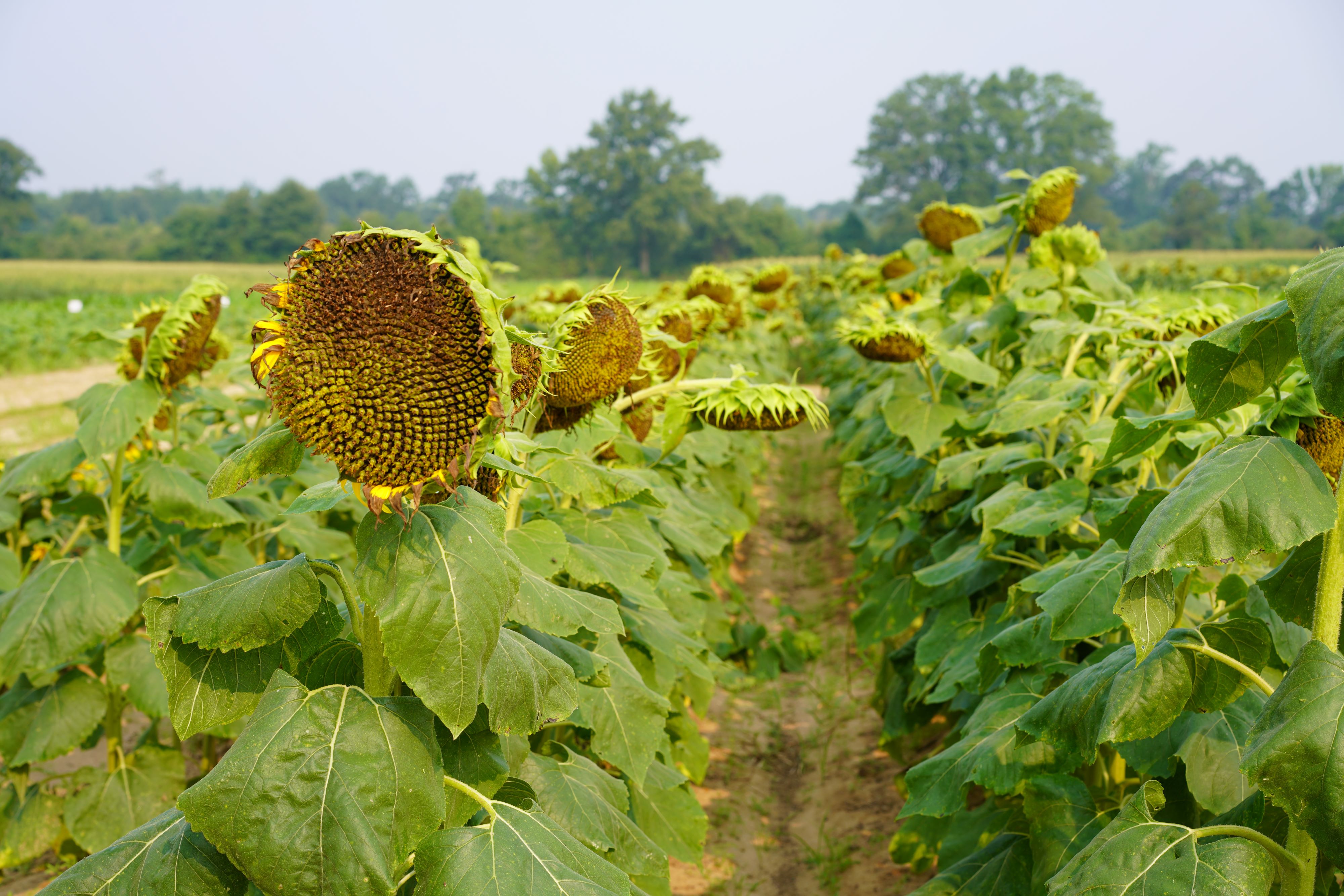 Photo Credit: Esleyther Henriquez Inoa
Photo Credit: Esleyther Henriquez Inoa
Thank you for joining us at the 2023 Organic Commodities Field Day! We appreciated the opportunity to connect and share research updates.


